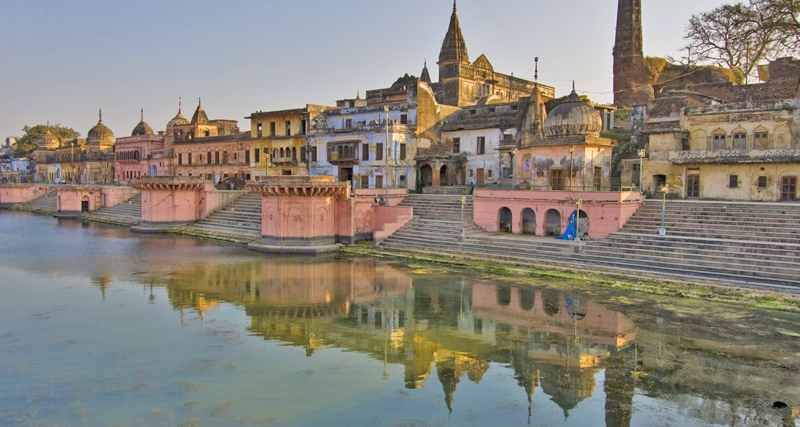Kalinjar is a historic fort in the Uttar Pradesh district of Banda. It is one of the eight historic forts erected by the Chandela rulers and is located near the World Heritage Site of Khajuraho on the Vindhya mountain range. The powerful stronghold rises to a height of 1203 feet and has a commanding view of the Bundelkhand plains. The name Kalinjar comes from the term Kalanjar, which refers to Lord Shiva, who slept here and broke the time barrier. Lord Shiva is said to be present at all times.
The fort also has stone sculptures of birds, mithunas, apsaras, and animals, as well as stone figures of Lord Shiva, Lord Vishnu, Shakti, Bhairava, Lord Ganesh, and Bhairavi. The Sita Sej, a small cave with a stone bed and pillow originally used by hermits, the Gajantak Shiva figure, also known as Manduk Bhairon, carved on the surface of the rock, and the Koti Tirth, a massive water reservoir are some of the locations of importance here. The Neelkanth Temple, which was built by Parmardideva, is Kalinjar's holiest temple. Inscriptions with magnificent carved pictures of Shiva, Ganesha, Hanuman, and Kala Bhairon line the path leading to the temple.
The Kalinjar Fort is a must-see for anybody interested in finding hidden mysteries within the architectural remains of the country's oldest landmark. The experience is sure to be exciting and spectacular.
History
From the 9th century through the 15th century, the Chandellas ruled over the Khalinjar Fort. It was also highly significant until the Mughal period, which is why the fort was attacked by Mohammad Ghaznavi in 1019 and 1022, and by Qutb-ud-din-Aibak in 1203 when he destroyed Parmadideva, the last Chandela. Despite the fact that Humayun stormed the fort, it was Akbar who eventually seized it in 1569. This fort was given to Birbal, who was one of Akbar's nine jewels. Following Akbar, Kalinjar fell to a Bundela chieftain named Chhatrasal, then to Hardev Shah of Panna, and eventually to the British in 1812.
Architecture
At a height of 244 meters above the earth, the Kalinjar Fort is perched on a flat-topped hill in the Vindhya Range. The fort is a mile long and half a mile wide, with an east-west orientation. Massive sandstone and granite chunks were employed in the building, which was done with lime mortar as the cement.
Three of the four gates that surrounded Kalinjar Fort were Panna Dwar, Kamta Dwar, and Rewa Dwar. The majestic fort's entrance is located at the foot of the hill, while the Rathore Mahal, constructed by Akbar in 1583, is located on the right side of the walkway. Lal Darwaza, Hanuman Darwaza, Budha Bhadra Darwaza, Chauburji Darwaza, Alamgir Darwaza, Ganesh Darwaza, and Bara Darwaza are the seven gates on the steep and stony route leading to the citadel.
Best Time to Visit
The best time to visit the Kalinjar Fort is between December and February, when the temperature is neither too cold nor too hot, providing for a nice and pleasurable temperature.
Tips for Visiting Kalinjar Fort
1. When visiting Kalinjar Fort, avoid wearing any perfume or deodorant to prevent being stung by the indigenous bees.
2. Try the Peda sold in the stores near the fort's entrance.
How to Reach?
Kalinjar Fort is located between Chitrakoot and Khajuraho and can be accessed by cab from either city. Alternatively, you can board the Chitrakoot-Khajuraho route buses and request to be dropped off near/at the fort.
Timings: 8:00 AM - 6:00 PM
Entry fee: There are no charges to visit the place.
Location: Kalinjar, Madhya Pradesh 210129.
Distance from Chitrakoot Bus Stand: 75 Km.



 +91-7303039611
+91-7303039611